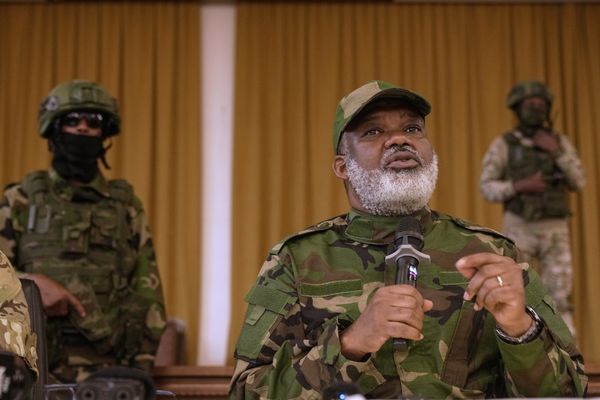
Agatha Christie loved her poisons, whether a glass of champagne spiked with cyanide, a dose of lethal strychnine doled out at a country manor house, or, at the heart of her A Caribbean Mystery, some cosmetics laced with belladonna. In fact, deadly toxins are deployed in more than 30 of her whodunnits.
Now the document that details the source of all that dangerously accurate knowledge, Christie’s volunteer record card from the first world war, has been made permanently available to the public before Armistice commemorations next month, alongside a newly discovered group photograph of the writer and her fellow volunteers.
Christie’s service card, part of the British Red Cross’s new online archive, notes a total of 3,400 hours of volunteering carried out in her hometown of Torquay, Devon. It also sets out the nature of her work as a trainee nurse in a temporary hospital set up inside the town hall from the time she enlisted in October 1914. And it notes that she later dispensed medicines at the hospital until the end of the war.
Her service as a Voluntary Aid Detachment (Vad) nurse introduced her to chemicals that fed her homicidal imagination for more than 50 years, establishing her as the world’s bestselling novelist. The previously unseen photograph, donated to the charity this year by the descendants of a senior nurse, shows the nurses in the hospital grounds.
“Agatha Christie, like many VADs, signed up as a young woman who was inexperienced in dealing with the traumas of war,” said Alasdair Brooks, heritage manager for the Red Cross. “It is ironic that, given the grisly endings many of her characters met, there was a time when she fainted at the sight of blood.”
At Torquay’s Town Hall hospital, she cared for the seriously wounded, assisted in operations and cleaned up after amputations. “I would wash [away] all the blood,” she later wrote, “and stick [the limb] in the furnace myself.”

When the 24-year-old Agatha Miller volunteered, she was engaged to her first husband, Archie Christie, who had joined the Royal Flying Corps and flown off to France. They were to marry on Christmas Eve 1914.
Christie had to pass several exams to become an apothecary’s assistant. She had to study theoretical and practical chemistry and she took tuition from a pharmacist in the town. All prescriptions were prepared by hand and it was essential to deliver the right dosage. Overdoses of many over-the-counter drugs, as well as switched prescriptions, are a common feature of her fiction, and many of her dastardly poisoners have some medical training.
“It was the power of kindness shown by Christie, and over 90,000 other volunteers who gave their time, that was the backbone of the British Red Cross’s support during the first world war,” Brooks said. “But had Christie not been taken off hospital duty to work in a dispensary, she might not have acquired her thorough knowledge of poisons which she used in her compelling plotlines.”
In her first novel, The Mysterious Affair at Styles, the killer uses strychnine, which, like arsenic, was still in medical use at the start of her writing career. “It was while I was working in the dispensary that I first conceived the idea of writing a detective story […] and my present work seemed to offer a favourable opportunity. […] I began considering what kind of detective story I could write. Since I was surrounded by poisons, perhaps it was natural that death by poisoning should be the method I selected,” Christie recalled.
Cyanide, the author’s favourite instrument of chemical death, was readily available until the mid 1940s in the form of domestic pesticides and was used to bump off characters in The Mirror Crack’d from Side to Side, And Then There Were None and, of course, Sparkling Cyanide.
Elsewhere in her books, toxic plants such as yellow jasmine, foxglove and hemlock, were administered to lethal effect. She even tried literary experiments with more unusual chemicals, such as thallium and ricin.
When the second world war broke out, Christie volunteered again. She renewed her training at University College Hospital, London, and worked regular hours at the dispensary, while planning fresh methods of murder.
Yet, surprisingly, Christie later wrote that she had preferred bedside nursing to mere chemistry: “I can’t say I enjoyed dispensing as much as nursing. Dispensing was interesting for a time but became monotonous.”
Other famous writers, including Vera Brittain and EM Forster, also volunteered, said Brooks. But it is equally important, he added, to honour the service of the unknown “heroes” who helped. To celebrate their work, the charity has made 56,000 items from its archive, many of which have never been displayed before, available online.
• This article was amended on 22 October 2018 to replace a reference to the RAF with the Royal Flying Corps.







